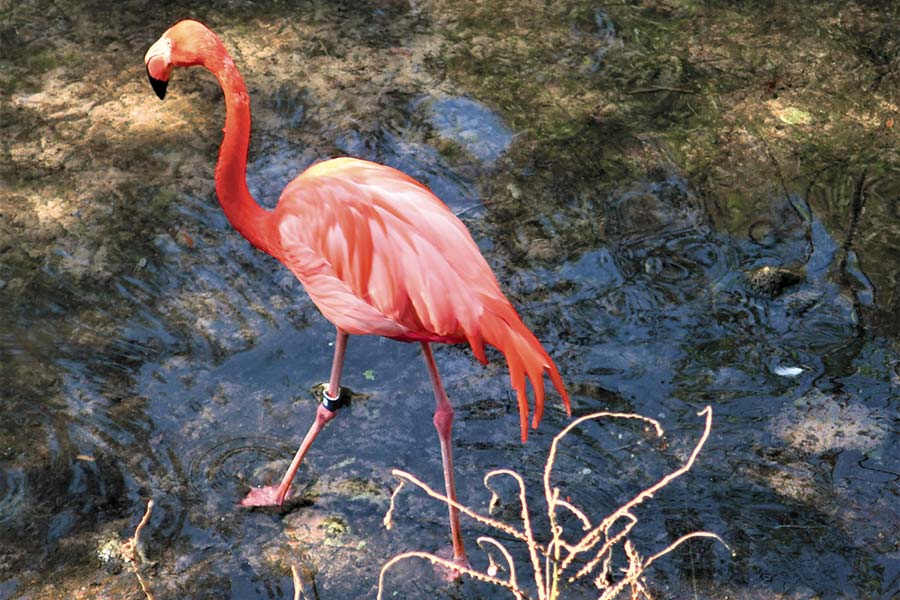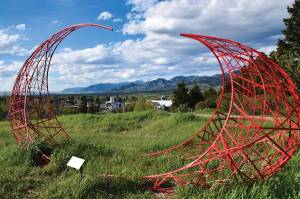By Victor Block
Arriving in Lee County, Florida weeks after Hurricane Ian devastated the destination, my wife Fyllis and I expected the worst, and our first impression supported that fear. Beachfront lots previously occupied by houses were empty, victims of wind and water. Some homes that escaped being obliterated had gaping holes in their roofs, which were covered by a blue tarpaulin. Piles of debris littered sidewalks.
To our surprise, and delight, concern about how we would spend the next few weeks soon dissipated. Stretches of beach were being reopened to sun worshipers. A few blocks from the Gulf of Mexico shoreline, there were few indications of the big blow that had wreaked havoc along the coast.
We discovered that the appeals of that area of southwest Florida provide a variety of diversions that can fill delightful days and enjoyable evenings. Compared with the glitz and glitter of Miami, and the go-go action at Walt Disney World, we found Lee County to be a lesser-known, but no less inviting, jewel of the Sunshine State.
No wonder many “snow birds” make it their winter retreat, trading the cold for a subtropical climate. We took advantage of both memorable man-made attractions and Mother Nature’s magnificent handiwork to sample some of what the location has to offer.
The list begins with the setting itself, a tableau of pine flat woods, cypress swamps and bands of mangroves. Bays, rivers, and streams have long played an important role in the local way of life. We spotted a sign reading “Welcome to the boating lifestyle,” and placards urging residents to “Adopt a canal.”
The Calusa [kuh-LOO-suh] Native Americans were drawn to this estuaries’ environment over 6,000 years ago, when they built shell-mound complexes, seasonal campsites and canal systems. Contact with Spanish explorers, and their diseases, eventually decimated the indigenous population. Among places where evidence of this chapter of history remain are Mound Key in Estero Bay, the former Calusa capital; the Calusa Heritage Trail, which is lined by informative interpretive signs, and Cabbage Key, where an inn and restaurant sit atop a large shell hill.
The Calusa focus upon fishing continues today in a state that is ranked among the best in the country for that activity. The year-round warm climate, diverse ecosystems and variety of aquatic settings offer options ranging from deep sea and reef fishing to backcountry and fresh water angling.
Gasparilla and Sanibel islands are known as the best shelling spots among a number of them, which make Lee County a virtual Mecca for those seeking to collect mollusks in an assortment of colors, shapes, and designs. A familiar site is people of all ages bending over, in what is termed the “Sanibel stoop,” picking up exotic shells with imaginative names like Lion’s Paw, Ponderous Ark and Banded Tulip.
Visitors interested in checking out the closest things to cities face an equally welcome choice. The county seat of Fort Myers encircles the brick-lined main street, a long residential thoroughfare lined by towering royal palm trees and historic traditional Florida “cracker” houses. Paintings, humorous metal sculptures and other street art add a touch of whimsy to the scene, and the Edison & Ford Winter Estates relate the fascinating story of two of America’s industrial icons.
Thomas Edison first visited Fort Myers in 1885 and built a winter retreat. Henry Ford came to town at Edison’s invitation in 1914 and bought an adjacent bungalow. Today the complex they share includes botanical gardens and the laboratory in which Edison tested more than 17,000 plants while seeking a substitute for natural rubber, finally selecting goldenrod as most promising. A 15,000-square-foot museum is packed with his innovative inventions and other displays.
Boca Grande became been a winter escape before roads were built for northerners, who arrived by train. That time is evoked by old Florida homes and tree-framed streets. The calm is disrupted each spring by fishermen seeking their luck in one of the best tarpon hideouts in the world.
Bonita Springs, a personal favorite, traces its birth to the mid-1800s, but the Calusa had lived in the area long before then. Banners proclaiming “Small town charm,” which are displayed throughout the historic downtown neighborhood, don’t lie. Early 20_century frame cottages and unpretentious food shops that sell local honey, Gulf-caught fish and home-laid quail eggs are among examples of the down-to-earth appeal.
Surrounding these towns and historic sites are natural places, and spaces, that themselves would warrant a visit.
The elevated Bird Rookery Swamp Trail allows hikers to immerse themselves in a virtual menagerie of swimming, skittering, plopping and flapping wildlife without getting their feet wet. The resident and seasonal population of barred owls, swallow-tailed kites, woodpeckers and other raptors and wading birds provides a melodic background. Thousands of alligators hang out there, sometimes warming themselves in the sun that hits the walking path, kept company by seldom-seen bobcats, black bears, Florida panther and other land and water dwellers.
The Six Mile Cypress Slough (pronounced slew) Preserve is a narrow wetland which serves as a home and safe travel route for a variety of wildlife, including endangered species. A boardwalk provides easy access and convenient viewing areas.
These are among Florida parks, which are the only state system in the country to have won four “Best of” gold medals from the National Recreation and Parks Association. They add to the appeal of Lee County as a vacation destination. MSN
For more information, log onto visitfortmyers.com.










